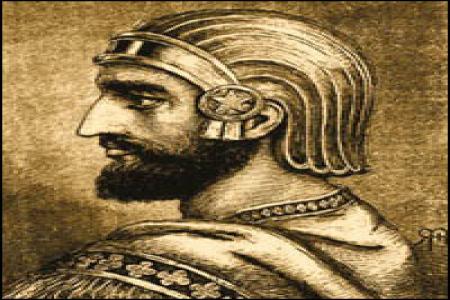Persian King Cambyses II didn’t lose army in Egypt, say archaeologists
 Tehran, December 2 : The claim made by two Italian researchers that Persian King Cambyses II lost an army in Egypt in a sandstorm in 525 BC, has been rejected by archaeologists.
Tehran, December 2 : The claim made by two Italian researchers that Persian King Cambyses II lost an army in Egypt in a sandstorm in 525 BC, has been rejected by archaeologists.
According to Herodotus (484-425 BC), Cambyses, the son of Cyrus the Great, sent 50,000 soldiers from Thebes to attack the Oasis of Siwa and destroy the oracle at the Temple of Amun after the priests there refused to legitimize his claim to Egypt.
After walking for seven days in the desert, the army got to an “oasis”, which historians believe was El-Kharga. After they left, they were never seen again.
“A wind arose from the south, strong and deadly, bringing with it vast columns of whirling sand, which entirely covered up the troops and caused them wholly to disappear,” wrote Herodotus.
On November 9, two Italian experts claimed to have found striking evidence that the Persian army was indeed swallowed by a sandstorm.
Bronze weapons, a silver bracelet, an earring and hundreds of human bones found in the vast desolate wilderness of the Sahara desert by twin brothers Angelo and Alfredo Castiglioni.
They believe that the bones and artifacts belong to the lost army of the Cambyses II, which was said to have been buried by a cataclysmic sandstorm in 525 BC.
Now, according to a report in the Tehran Times, Egyptian archaeologist Zahi Hawass, currently serving as Secretary General of the Supreme Council of Antiquities, has rejected the claim of the Italian brothers.
Iranian archaeologists Reza Moradi Ghiasabadi and Kamyar Abdi have challenged the Italian brothers’ claim.
“The Herodotus’ story is the only document claiming that the Cambyses’ army was caught in sandstorm,” said Moradi Ghiasabadi.
“No other ancient historian has referred to the issue. In addition, all Herodotus’ remarks about Cambyses have been rejected by historians so far,” he added.
Moradi Ghiasabadi referred to the Darius inscription in Bisotun, saying, “Darius talked about Cambyses in the inscription, but there is no reference to his (Cambyses) invasion (of the Temple of Amun) in the ancient document.”
“In addition, Darius also discussed the death of Cambyses in the inscription and said that he met his death naturally,” he added.
“Is it reasonable that an event of such magnitude as the disappearance of the 50,000-soldier army of Cambyses in Egypt had taken place, but Darius would not refer to it, even if only briefly, in the inscription?” Moradi Ghiasabadi asked. (ANI)